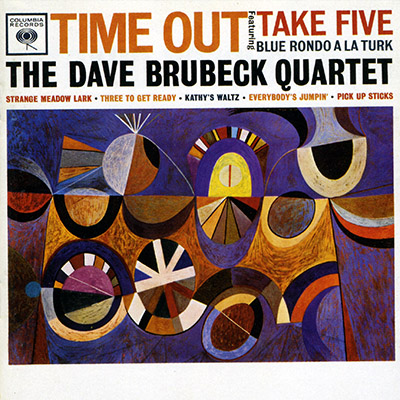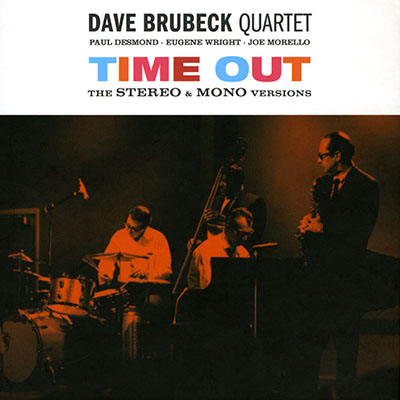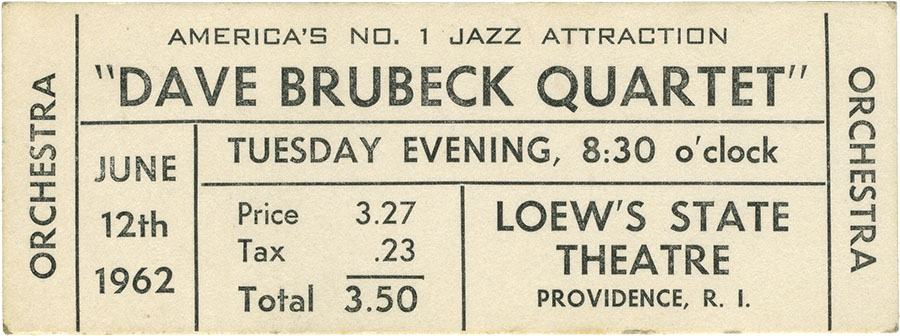

Time Out is one of the seminal releases in the history of recorded jazz, an album that arguably broke new ground with its retreat from the conventional 4/4 rhythms. Its seven selections explored instead the possibilities of different time signatures which, though not exactly unheard of in other musical genres, were much less common and not widely accepted among jazz purists. "Take Five," which was composed by alto saxophonist Paul Desmond, would go on to be one of the most recognizable tunes in the genre, revered by both jazz aficionados and lay listeners alike. Time Out is one of those albums that has had so many releases over the years that it would be crazy to attempt to catalog (much less review) them all. Here I'm going to compare the four compact disc versions in my personal collection.




























That leaves two contenders for the top prize, the Green Corner/Legacy discs and the State of Art remaster. I couldn't for the life of me hear any difference between the Green Corner and Legacy releases, and the individual tracks on each seem to have the same peak levels and average volumes as their counterparts on the other. This leads me to believe they are derived from the same transfer and share the same mastering job. Since the GC edition includes three additional albums - the original mono version of Time Out and two other Brubeck Quartet albums featuring experimental time signatures, it is obviously the way to go over the Legacy as far as the value being offered. As for the SOA disc, it compares very favorably with the GC and Legacy offerings as far as sound quality. The stereo separation is a bit wider and cleaner sounding, and right out of the gate it is noticeably quieter than the others due to a lower recording level. In fact, the recording level is low enough to rival what's found on a lot of classical CDs, with songs coming in as low as -22 dB average RMS. This affords a great deal of headroom for the album's louder passages, such as the drum solo in "Take Five" and the drum roll that closes album opener "Blue Rondo à la Turk." The GC/Legacy discs show definite clipping in these areas, particularly on "Take Five." There is also some compression to be heard on these as compared to the SOA offering, though in fairness it's probably the kind of thing only a very critical listener is likely to notice, especially without a direct comparison to the SOA mastering. I initially judged the SOA disc to be a little too bright before concluding that the difference was more a matter of the Green Corner and Legacy offerings being more compressed. Unfortunately, there's always a "gotcha" with these kinds of critical listening comparisons, and in this case it comes right at the beginning of track three, the album's most iconic and celebrated number. "Take Five" on the SOA disc is marred by a very, very minor glitch during the first second of audio. It's so minor that it could escape your notice if you're not listening through headphones or inside a very quiet listening environment, but it is there nonetheless and prevents the SOA from being the unconditional, runaway winner for this comparison. It ultimately comes down to a question of just how uncompromising one chooses to be in his or her quest for perfection: which is more damaging to the integrity of the music, compression or a single, extremly brief tape glitch? Although the tape glitch bothers me, my take is that the remainder of its overall presentation puts the State of Art disc over the top.
Before closing here, I'm going to revisit the elephant in the room, that being the alleged remixing of the album. I can't say with 100% certainty that this has happened, but what I've read and what I've heard with my own ears lead me to believe it could be true. There are some audio and tonal differences between the 1987 CD and its descendants, as well as considerations about different instruments' placement in the stereo field, that just seem too distinct to be completely written off as the result of digital remastering or better source tapes. It should also be noted that none of the newer discs have audio clues that suggest any obviously overzealous efforts to "clean up" the sound by removing tape hiss. And my 1959 LP pressing of Time Out sounds more like the State of Art compact disc release than it does the Masterpieces one from 1987. So... who knows? However you cut it, what is ultimately being judged here is which compact disc release sounds the best to my ears, and that one happens to be the SOA offering. The State of Art version of Time Out comes in mini gatefold packaging mimicking that of an LP, and includes an LP style paper sleeve and an obi-strip.
